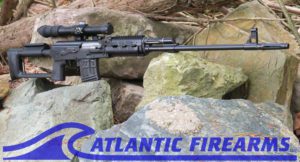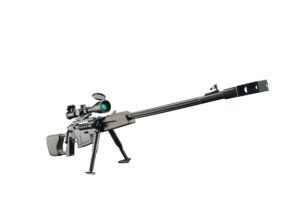So, you’ve got a stamped-receiver AK—maybe a Zastava M70 AB1 or AB2—and you’re wondering why your rifle kicks like a mule on espresso. Or maybe you’re chasing that mythical “smooth-as-butter” recoil everyone on forums keeps bragging about. Welcome to the world of tuning gas systems, where the difference between a brutal shoulder punch and a silky shot lies in a few small tweaks.
Let’s dive in headfirst (with safety glasses on, of course).
What Exactly Is the Gas System, and Why Should You Care?
The gas system on an AK rifle redirects a portion of the hot gas from your fired round back toward the bolt carrier, cycling the action. In theory, it’s perfect. In reality, many AKs—especially stamped-receiver variants—come a bit overgassed right out of the crate.
Why? Because manufacturers want to guarantee reliability no matter the conditions, ammo quality, or operator. So they crank up the gas pressure to “11,” and call it a day.
But here’s the kicker: that extra gas beats up your rifle, accelerates wear, throws your muzzle around like it’s doing Zumba, and sends your brass flying into low Earth orbit.
Tuning your gas system allows your AK to operate efficiently—cycling reliably without all that excess violence. Think of it like adjusting your car’s suspension: smoother ride, longer life, less drama.
Signs Your AK’s Gas System Needs Tuning
Before you go busting out the tools, look for these telltale signs that your stamped AK is gas-happy:
- Violent recoil even with mild ammo
- Heavily dented brass or brass flung into the next ZIP code
- Faster-than-necessary bolt carrier speed
- Premature wear on the rear trunnion or carrier tail
- Difficulty maintaining consistent zero (especially with optics)
If these sound familiar, your AK is screaming, “Help me, I’m drowning in gas!”
Know Your Platform: Zastava’s Stamped-Receiver Specials
Zastava’s M70 AB1 and M70 AB2 rifles are fan favorites. Durable, battle-tested, and handsome in that rugged “Eastern Bloc” way. But yes—like most stamped AKs, they run a bit rich in the gas department.
If you’re working with these classics, you’re in luck. You can find genuine M70 AB1 parts kits and M70 AB2 parts kits to rebuild, tweak, or refresh your setup before (or after) tuning the gas.
Tuning Methods: The Toolkit for Gas-Taming Glory
You’ve got options. Some are simple and cheap. Others are… less simple and not cheap. Pick your poison.
1. Adjustable Gas Blocks (If You’re Fancy)
Replace the standard gas block with an adjustable one. This lets you control how much gas hits your carrier, usually with a screw or dial.
Pros:
- Precise control
- Easy to tweak for suppressor use
- Great for reloaders using different ammo
Cons:
- Requires fitting
- Not exactly drop-in on most Zastava rifles
- May feel like cheating to AK purists
Bonus: If you’re planning to run suppressed (you rebel), adjustable gas blocks are your best friends.
2. Gas Port Reduction
Break out the welder or some JB Weld and reduce that gas port diameter, then drill it out to a smaller size.
Pros:
- Permanent and effective
- Doesn’t require new parts
Cons:
- Requires tools, precision, and nerves of steel
- Overdo it and you’ve got a single-shot AK
This is for the brave. Or the reckless. Or both.
3. Gas Tube Restriction Inserts
These clever doodads restrict the flow of gas through the existing tube. Think of them as a traffic cop for your bolt carrier.
Pros:
- Easy to install
- Reversible
- No permanent changes
Cons:
- May not work on every variant
- Less tuning precision
If you’re rocking a Zastava AK and want to keep things stock-ish, this might be your best bet.
4. Heavier Buffers & Springs
Okay, this isn’t tuning the gas per se, but it’s like putting a helmet on your bolt carrier.
A stronger recoil spring or buffer helps absorb that extra energy.
Pros:
- Drop-in solution
- Can smooth out recoil
- Zero modification to the gas system
Cons:
- Doesn’t fix the source of the problem
- Delays the inevitable
Still, it’s a great stopgap if you’re waiting for parts or procrastinating on real tuning.
Bonus Tips for Better Performance
Once you’ve tamed your gas, don’t stop there—optimize the rest of your rifle for a symphony of smoothness.
- Upgrade your furniture sets and muzzle brakes for better recoil control
- Use a quality parts kit to ensure your carrier group and bolt aren’t working against your efforts
- Don’t forget regular lube and maintenance—smooth metal is happy metal
Remember: a well-tuned AK is a happy AK. And a happy AK doesn’t try to throw itself off the bench every time you pull the trigger.
What to Expect After Tuning
After tuning your gas system, you’ll notice:
- Softer recoil impulse
- More consistent ejection
- Less wear and tear
- Increased accuracy potential
- A smug sense of satisfaction
Oh, and your shooting buddies might get jealous when they see your rifle cycling like a dream while theirs still slams like a hammer.
Common Mistakes to Avoid
Look, we all want to tinker—but here’s what not to do:
- Don’t drill your gas port larger “just to be sure.” Bigger ≠ better.
- Don’t assume your gun must be overgassed just because recoil exists. Test it.
- Don’t ignore ammo type—steel case vs. brass can affect cycling
- Don’t buy sketchy third-party parts off auction sites and hope for the best
If you’re unsure, start small. Reversible changes first. Permanent mods later.
Conclusion: Tame the Beast, Don’t Muzzle It
Tuning gas systems on stamped-receiver AKs like the M70 AB1 and AB2 isn’t just for high-speed, low-drag tactical bros. It’s for anyone who values smooth shooting, reliable cycling, and rifles that age like fine wine—not like a rental car.
Whether you go all-in with an adjustable gas block or just drop in a heavier spring and call it a day, the results speak for themselves.
Check out the full selection of Zastava AK parts and kits here, grab a M70 AB1 or AB2 kit to rebuild your base, and don’t forget the Top 5 Zastava Rifle Upgrades while you’re at it.
And when you’re ready to see what a finely-tuned Zastava rifle can really do, head over to the Zastava Arms USA homepage—because smooth, reliable performance starts with the right parts.


